Who would have thought to Ireneo and Sara that the little Goyo, who picked up the wood shavings from the barnyard to paint the walls when he had not yet taken any steps, would be the very person who would give life to the face of Marcellin Champagnat.
Born into a simple family, Gregorio Domínguez González (affectionately called Goyo) was born in the province of Burgos, Spain. His father had a ‘natural talent’ for drawing and painted portraits of his brothers: ‘I certainly inherited this love of drawing from him,’ says the artist.
His trajectory with the Institution began at the age of 10 when Brother Agustín Carazo, Goyo’s formator, discovered this drawing genius while helping him with some school subjects. During his novitiate in Sigüenza (Spain), he took advantage of a small printing press to make all the drawings related to the magazine of what was then the Marist Province of Madrid: ‘They were very simple things that I am very fond of’. All this material was later compiled by Ediciones Paulinas in a kind of album for catechists. However, it was not until 1977 (when Goyo was 17 years old) that the same publishing house commissioned him to illustrate the book ‘Los grandes amigos de los niños’ (The great friends of children). As the artist points out, this was his first paid job before exhibiting his paintings in galleries in Madrid from the age of 28.

What Goyo intends to reflect through his works is what he calls ‘his life experience’. “I express my character with all the good and the defects I have. My way of looking at life in which I try to give a positive, friendly vision, with its lights and shadows, but an optimistic and luminous vision of life. -When I paint, I feel the consolation that these works can give hope to people who can see them and enjoy them”.
Closely linked to the Institution, for him, painting works for the Marists is synonymous with recognising the brothers: ‘It is a form of gratitude and of capturing all that I have received from them, above all in experiences, in ethics and in religion. I try to reflect my experiences of brotherhood, humanity and service with them. In short, all the good things that, during the years that I lived with the Marists, I had the opportunity to share with so many brothers”.
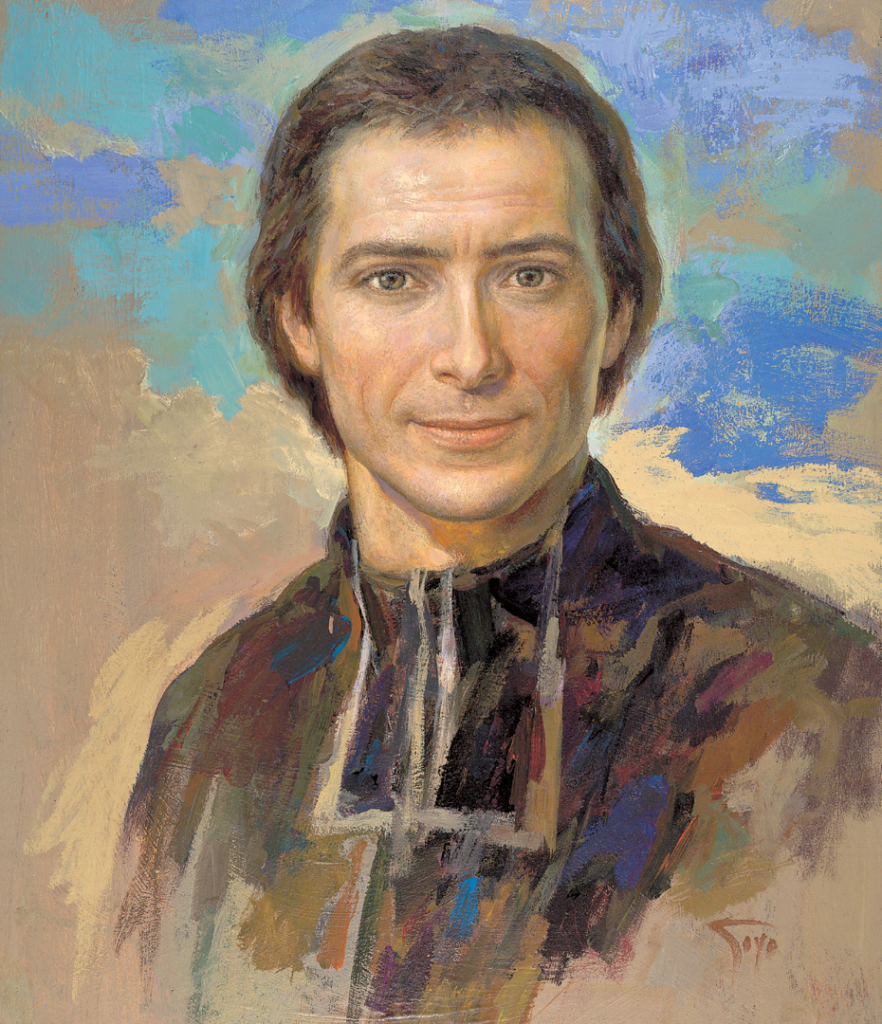
Popularly known as the artist who gave life to the face of Marcellin Champagnat, Goyo based himself on a drawing made of the founder after his death and on a neoclassical statue made in France to paint what is perhaps his most recognised work within the Institution. According to the artist, ‘a draughtsman made a pencil study of Champagnat’s face and from that structure, I began to make sketches and to bring him to life, to put him in different positions and with different expressions. I contrasted all this with the brothers and other companions like Teodosio Sánchez, who was also a great connoisseur of art. He would give me suggestions or tell me possibilities to make Champagnat in different ways.
Marcellin Champagnat has totally guided Goyo’s artistic career: ‘I keep him very much in mind, I feel that he helps me to go forward and to overcome difficulties. I feel that he is here by my side”. ‘In fact, I have in my studio reproductions of the Marist works that I have done and photographs that other people have sent me’, he adds.
Goyo is committed to a formation in ethical and human values. He appeals to all Marist teachers: ‘It is important to reclaim all the artistic aspects that are a manifestation of freedom and transcendence. We must fight to have spaces and times for students to develop their abilities. Art can help to continue to stand up for all these values of freedom and humanity”.


The work he considers most significant is the mural of the Marist Family that he did for the General House (Rome, Italy) as he remembers it as something ‘very heartfelt, very lived and contrasted’. At that time, Brother Carazo was in charge of the causes of canonisation and beatification at the Holy See, as well as being the one who guided him with the mural.
Other paintings that the artist highlights are the mural for the hall of the Chamberí School (Madrid, Spain) and the mural in the dining room of the San José del Parque School (Madrid, Spain), which ‘in terms of technique is quite different from other things I have done. I’m very happy with the result, although artists, as you know, are a bit dissatisfied with our work”.


But they are not the only ones. The artist has also been able to bring the figure of the Good Mother out of a mountain and a waterfall, to reproduce the Last Supper with the face of each of the apostles or to illustrate the complete life of Champagnat in the form of a comic book, among many other things. Today, his works as well as reproductions of them can be found in every Marist corner of the world: chapels, corridors, communities, dining rooms, classrooms…


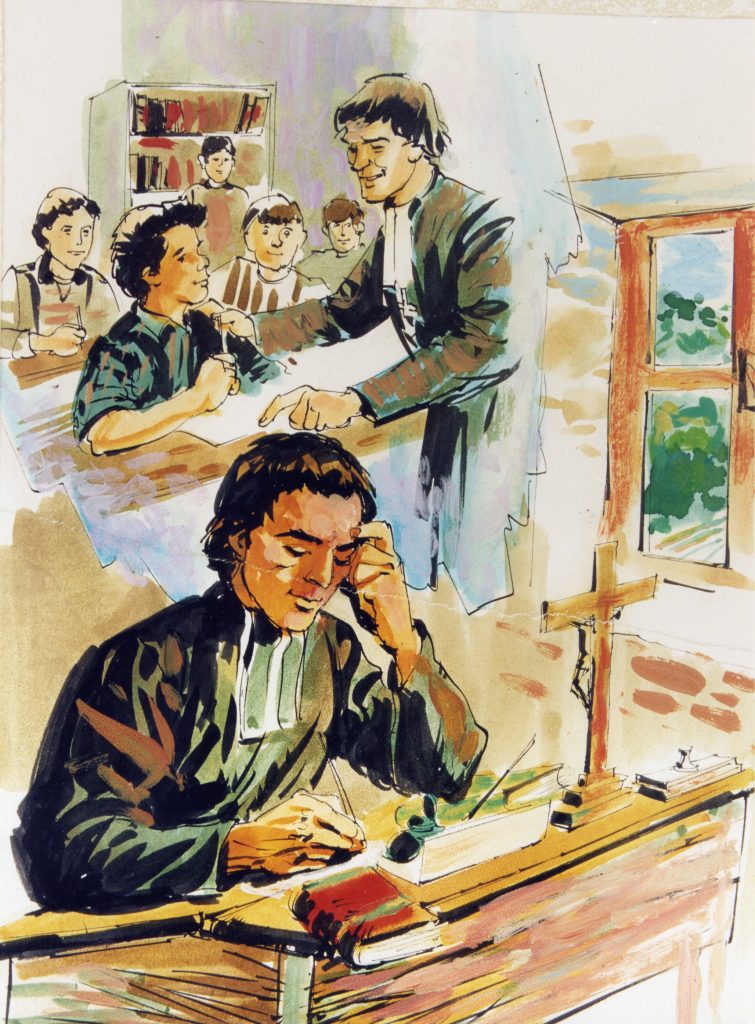
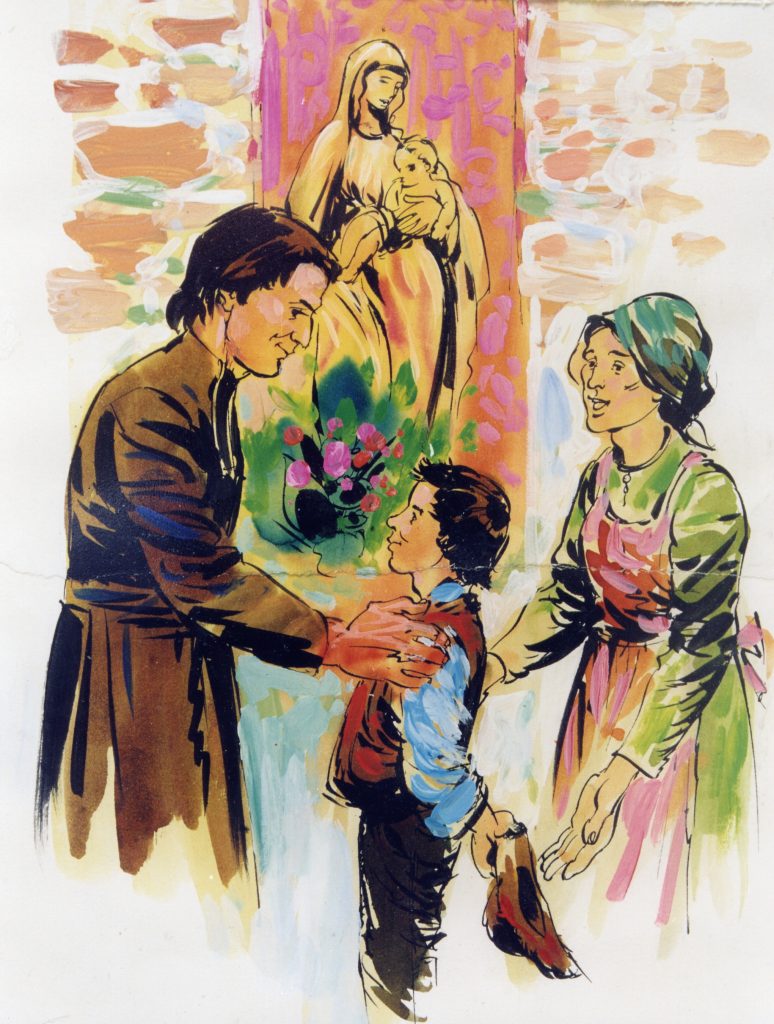
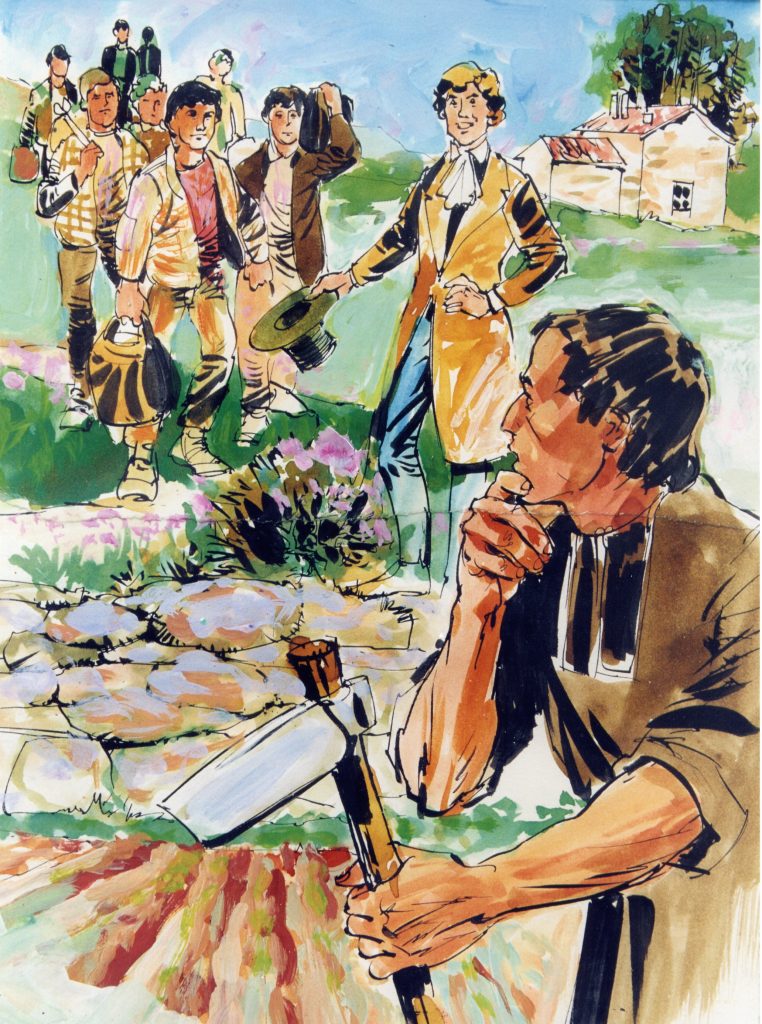


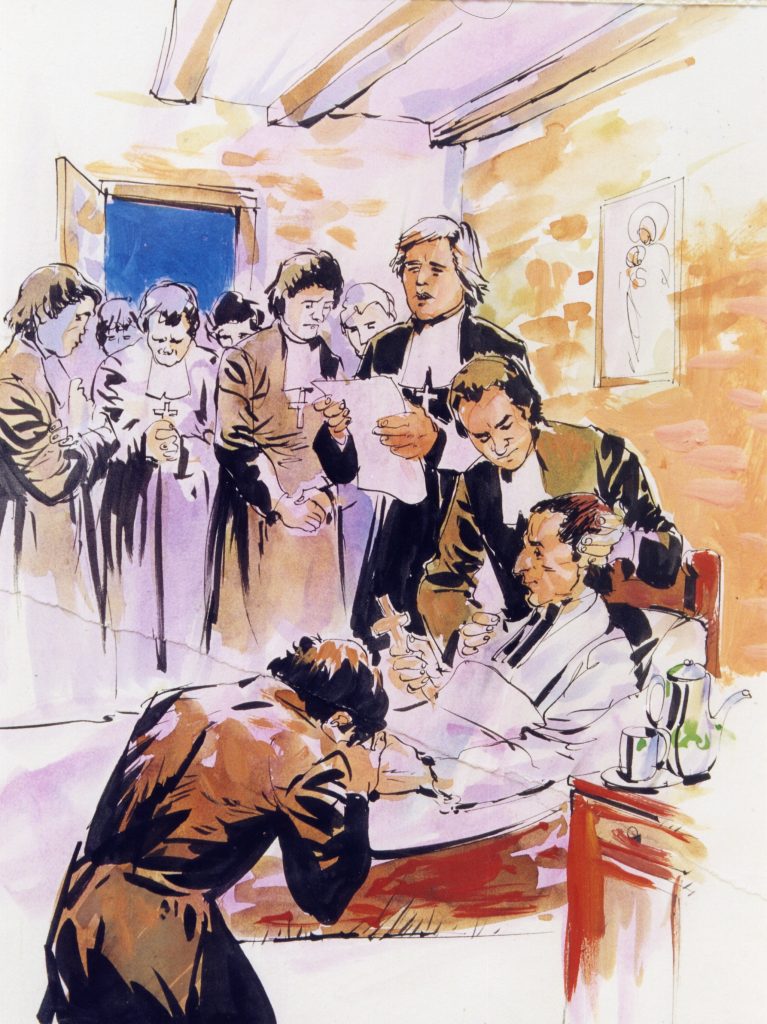

So no, no one told Ireneo and Sara that this little crawling boy would become one of the greatest protagonists of Marist history, nor that he would give life to the most emblematic face of the Institution. What they certainly did imagine was that he would be humble, simple and modest, as humble as the three violets in that famous garden named in the song.
Cristina Plaza Sánchez – Head of Communication and Marketing Champagnat Global
